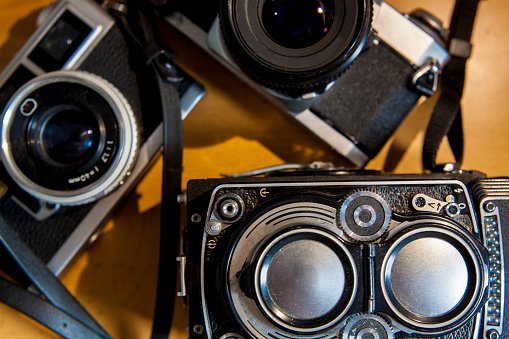HELLO! Welcome back to from negative to positive, a blog about all things photo related from photo history, to how tos, and lot’s about me!
I thought I would share with you my process when it comes to buying a new medium format film camera. This blog is as much for me as it is for you, you see, I have only ever shot one project (my big secret unreleased one) and a few street shots on medium format film. I loved it so much, but I was mostly satisfied with my 35mm until I could afford to buy a medium format camera. WELL KIDS, my tax return hit and its burning a medium format camera sized hole in my pocket so let’s get into it.
What is Medium Format Film?
Medium format film sometimes also known as 120 film is larger than your typical 35mm. 120 film is 6cm in width and x cm long depending on what format camera you choose. Medium format cameras shoot in 6x4.5, 6x6, 6x7, 6x9, and panoramic 6x17. So for example if you are shooting on a Hasselblad, you are shooting 6x6 format, and your negative will be 6 cm x 6 cm. It is important to note which format you would like to shoot as it does effect how many shots you can get out of a roll of film. You will get 16 shots with 645, 12 shots with 6x6, 10 shots with 6x7, 8 shots with 6x9, and 3 shots with 6x17.
SLR vs TLR vs Rangefinder - What’s Best For YOU?
When choosing a medium format camera you should reflect on the kind of work you create, some cameras will be better than others for certain shooting styles. Do you shoot portraits, landscapes, street? Take that into consideration as we discuss each of these types of cameras and what their best features are.
SLR - Also known as Single Lens Reflex, this will be the most similar to your traditional 35mm camera, it uses the same mirror and prism system that would be in your Canon AE-1. These cameras can get heavy, and mechanically complex. These usually have some options for customization depending on which kit you buy. These cameras are an investment, you will definitely have it a long time with the appropriate care.
TLR - Twin Lens Reflex, something we might be a little less familiar with. These cameras have two objective lenses of the same focal length. One lens is used to take the photo, and the other is used to see through your viewfinder. These quirky looking cameras can usually shoot with a shutter speed up to 1/500. These usually cost less than an SLR and are mechanically simpler.
Rangefinder - Rangefinders are great for street photography, they allow the photographer to measure the subjects distance and capture sharp images.
Ask Your Friends!
Us photographers need to stick together! Ask your photographer friends what cameras they like best and why they like it for their work. I recently found myself at a gallery opening with a bunch of my LA photographer homies and was discussing my desire for a new medium format camera. I got a lot of feedback on what might be best for my style of photography, as well as what they didn’t like about certain cameras. A member of the group even offered to set up a date for me to use her Mamiya RB67 on a test shoot. If you can, I highly recommend finding someone who will let you test out their camera before clicking “buy it now”.
Do Your Research!
Last piece of advice, do your research. Being a photographer whether it be as a hobby or as a career is EXPENSIVE. Don’t get caught up in the thrill of it all and purchase a camera without asking questions and researching the camera in depth before purchasing. If you are purchasing any film cameras from EBay, make sure to ask the seller to send you photos of all the elements of the camera, ask if its been film tested, if there is any for or fungus in the lenses, and if the camera has ever been serviced! Youtube university is your best friend, check out this video by Kyle McDougal on types of medium format cameras! He goes in depth on some of the details of those cameras, and his channel is a wealth of film camera knowledge.
Happy film camera buying friends!



